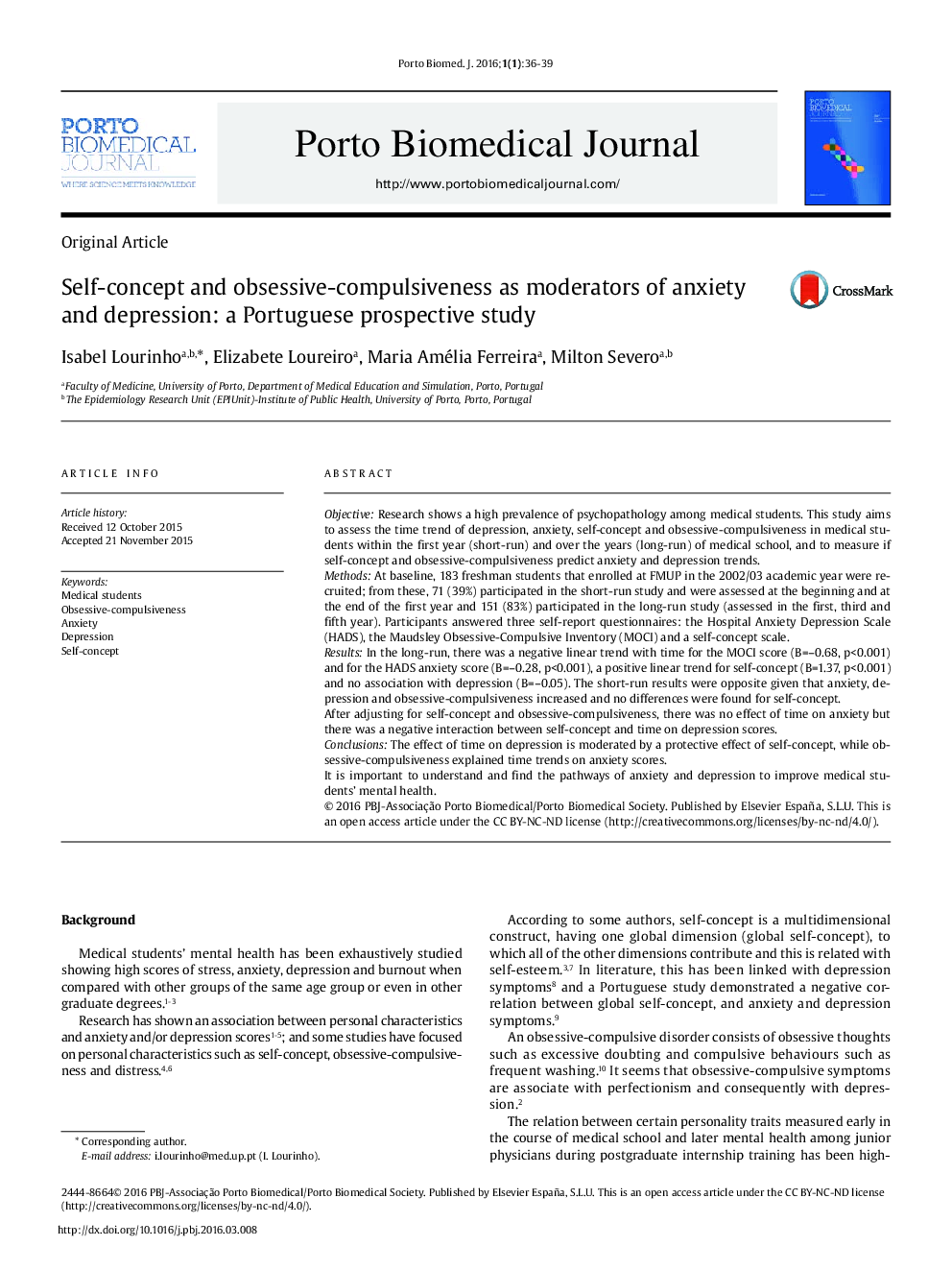| Article ID | Journal | Published Year | Pages | File Type |
|---|---|---|---|---|
| 3819377 | Porto Biomedical Journal | 2016 | 4 Pages |
ABSTRACTObjectiveResearch shows a high prevalence of psychopathology among medical students. This study aims to assess the time trend of depression, anxiety, self-concept and obsessive-compulsiveness in medical students within the first year (short-run) and over the years (long-run) of medical school, and to measure if self-concept and obsessive-compulsiveness predict anxiety and depression trends.MethodsAt baseline, 183 freshman students that enrolled at FMUP in the 2002/03 academic year were recruited; from these, 71 (39%) participated in the short-run study and were assessed at the beginning and at the end of the first year and 151 (83%) participated in the long-run study (assessed in the first, third and fifth year). Participants answered three self-report questionnaires: the Hospital Anxiety Depression Scale (HADS), the Maudsley Obsessive-Compulsive Inventory (MOCI) and a self-concept scale.ResultsIn the long-run, there was a negative linear trend with time for the MOCI score (B = –0.68, p < 0.001) and for the HADS anxiety score (B = –0.28, p < 0.001), a positive linear trend for self-concept (B = 1.37, p < 0.001) and no association with depression (B = –0.05). The short-run results were opposite given that anxiety, depression and obsessive-compulsiveness increased and no differences were found for self-concept.After adjusting for self-concept and obsessive-compulsiveness, there was no effect of time on anxiety but there was a negative interaction between self-concept and time on depression scores.ConclusionsThe effect of time on depression is moderated by a protective effect of self-concept, while obsessive-compulsiveness explained time trends on anxiety scores.It is important to understand and find the pathways of anxiety and depression to improve medical students’ mental health.
